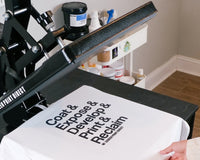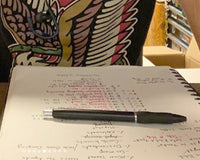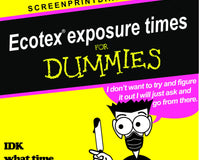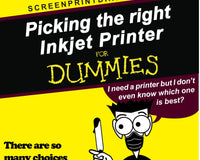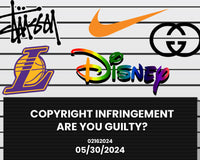We are going to go over the most commonly asked questions we get when it comes to getting paid for your screen printing jobs. First, you need to establish what type of payments you will accept. Then you need to determine if you want all the money upfront or in deposits. Lastly, you need to keep a record of payments for easy bookkeeping.
We all handle money differently and there is no right or wrong way if you are getting paid and making a profit. At the end of the day, we need to do what works for us and our customers.
What payment methods can I accept?
There are so many types of payment methods available to you as a business owner that it can be overwhelming to know where to start. You can accept more old school forms of payment like cash and check or you can accept digital payments through PayPal, Venmo, or Zelle to name a few. Another popular option is Stripe which is often built into online web building platforms like Shopify. Below we will go into things you should consider before selecting which methods of payment to will accept.
- Fees – What are the fees associated with each payment processor?
Many companies charge different fees depending on what plan you are on or based on your sales volume. For example, Zelle may be free for person-to-person transactions but for businesses, there is a small fee tied to each transaction. If accepting a credit card there will always be a fee associated with the charge. Do your due diligence and make sure to check out each company’s fees.
- Customer Demographic and Payment Type
Cash/Check - While we may be turning into a cashless generation there are still a few generations who prefer cash and/or check. Things to consider with cash, are you OK having cash on hand for cash transactions and generating change? For check does it need to be a cashiers check to ensure the funds are available?
Digital Payments - Millennials and under are accustomed to digital payments and don’t like to be inconvenienced beyond a few taps of their smartphone, making Venmo, Zelle, Paypal and Cashapp very popular. Digital is great because the money is often time instantaneously transferred from the client to your pocket. There are fees associated with many of these payments but they are typically very secure and protect both you and the buyer. Check agreement terms on all of these, some apps have limits for the amount of cash that can be sent daily.
Safety tip: If you don’t feel safe about a transaction, we prefer PayPal, they offer an extra layer of security within the transaction that makes it so you can sleep a little easier at night.
Credit Card - This is the most popular form of payment and a form we highly recommend accepting, as it is the most universal. With credit cards the payment processes almost instantly, however, there is a payment period gap in which money is transferred from the bank to your account. Again, fees are associated with credit card
Terms - A lot of large businesses will want to pay you with Net Terms. What does this mean? Net terms are the period of days in which the vendor is to be paid. If the terms are Net 30, the buyer will provide payment to you in 30 days even if they have already received their product. This may be popular with big businesses, however, it is not a desired payment method for small shops, as you will have to live without that cash for 30 days and need to pay for all the merchandise upfront. We do not recommend this for new or small shops.
Should I collect a deposit or take payment in full?
This is another decision that is up to you, your comfort level, and your wallet.
Taking a partial deposit upfront is required if you don’t have the funds to purchase the materials necessary to complete the print job. Every shop is different, some take 40% and some just take the amount required to get printing. Consider what you need to make this job happen, blank merchandise, ink, emulsion, etc.
Typically covering your costs in the initial deposit is a universal rule in a variety of service-based gigs. Painters, contractors, landscapers, and more operate this way so it should come as no surprise to your client.
You can also require 100% upfront and while that may work for more established shops not everyone does it. Some clients don’t feel comfortable with a non-refundable deposit, and if you put yourself in the customer's position, they lose their leverage if they are not satisfied with the job. There are some exceptions where you can start a job without a deposit if you feel comfortable with that customer, perhaps a loyal repeat customer that has been printing with you for years, however, we never recommend this.
Keeping record of payments
Keep a clean record of everything! Every receipt from your clients is important and will make accounting so much easier when it comes to calculating your profitability and doing your taxes. Keep a receipt of every transaction, deposit, and one for the final payment. Not only will this help your bookkeeping but it will keep you in the right when a forgetful customer that swears they paid you in full already.
You can do this the old school way with paper receipts if your volume isn’t too large, but we do find cloud services such as QuickBooks to be better and easier to organize. Excel is also a great free option to keep everything on the computer and safe from being misplaced.
Let's Talk
Remember, we are here to help! Drop a comment below or email our support team at info@screenprintdirect.com



